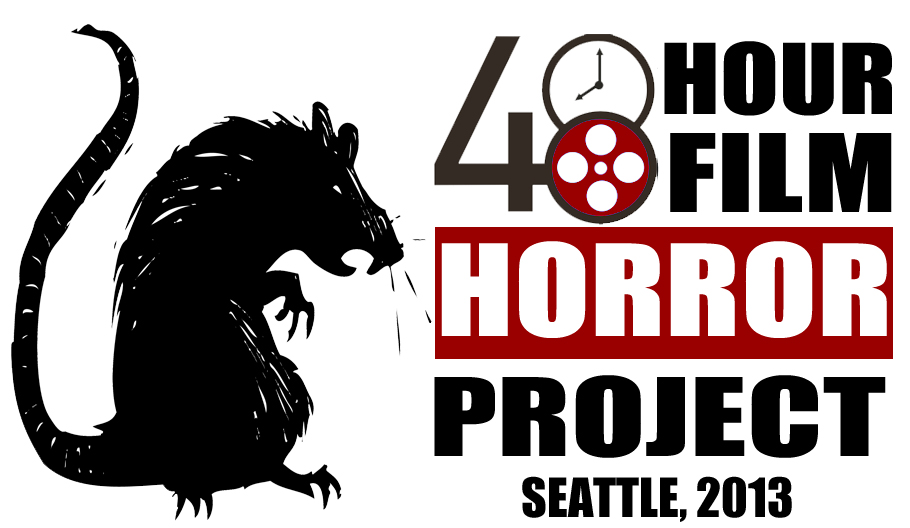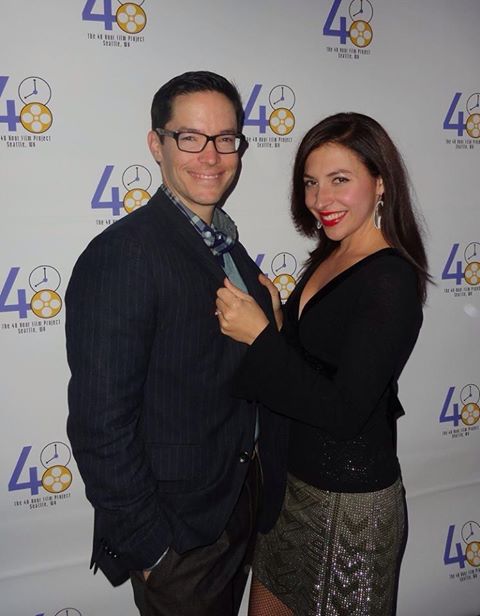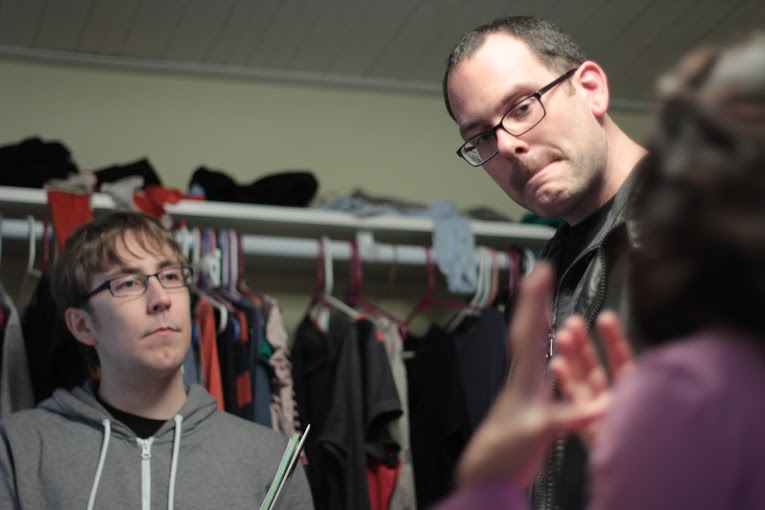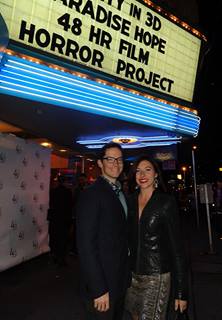“Trauma” – Film producing for Seattle 48 Hour Film Horror Project

We produced – as solo producers – our first short film recently for the 2013 48 Hour Horror Film Project, which was its inaugural season.
The festival came with a few strings…Aside from getting everything done in 48 hours, the elements that we needed to incorporate into our film were:
- Prop – Pineapple.
- Character – Dr. Lucinda/Lyle Pendergrass.
- Line of Dialogue – “That’s it, I’m going back to school.”
Our shoot was smooth as silk, and we were voted as audience favorite during after the screening.
Before I can tell you where to catch the film next, I will give you a few tips on how to have an exceptional experience at your next speed challenge competition! Since folks are not being paid (by rule, typically, I believe), it is important to assemble a team of people who are passionate about film making and want to work for the sake of the art, experience, and exposure.
- Pre-Production: If you know you will be competing, assemble your team ASAP and get everyone on the same page.
- Team Building: You will probably want the following non-actors on board: Writer, Director, 1st AD, DP (who should come with some sort of crew – gaffer, grip, 1st AC), Sound, Composer, Editor, Craft Services.
- Team Building II: Other helpful players include associate producers, DIT, runners, PAs.
- Casting: Cast people who you want to work with, and whose work you know.
- Locations: For this festival, we knew we were going to be working in the horror genre. So, we scouted a fantastically eerie park (which we did not end up using), and we filmed in the home of a fantastic friend and artist, who happens to have a nice basement that can be manipulated to assume a creepiness factor, which we thought might come in handy. And it did. Any pre-production scouting you can do will pay off during crunch time.
- Day-of Logistics: There are a few ways to handle the fest when it comes to actual filming. As mentioned, this is a 48 hour challenge, and genres are picked from a hat on Friday around 6pm. Teams are released to work by 7pm, so, in theory, writing and shooting can happen kind of at the same time and you can get cracking on Friday, shooting into the wee hours. I am not sure I recommend that, however. What worked for us was to let our writers get to work after we picked from the hat, and after a few rewrites and at about midnight the script was delivered to the hands of the actors and the key crew members. At 7AM on Saturday, we were at our first location, and by 6PM we were wrapped. What kept us on track was a crack AD, a director who know what he wanted, a DP who had a great team that worked well under pressure, and actors who were prepared and ready to work.
- Dealing with Data: We were shooting on a RED camera, and we had a runner shuttling footage to our editor every 2-3 hours, so editing could could get started as soon as possible.
- Staying Motivated and Energized: My wife, Angela DiMarco says “The most important thing on an indie set is caffeine and good food.” Craft services are a must on a film set, especially when no one is getting paid. We had exceptional catering, and we stayed fed and hydrated for the duration.
- Staying Positive: Sets can be filled with tension if they are not efficiently managed. One thing we have control of, as mere mortals, is our attitude. Look around you. Breathe. You are making a movie. It’s pretty amazing. Stay focused. Stay positive.
- Timing: Consider filming the most difficult scenes first.
I hope that helps!
Now, if you want to see Trauma in Seattle, the next time we screen is November 22. Click here for more details.












Responses